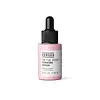What's inside
What's inside
 Key Ingredients
Key Ingredients

 Benefits
Benefits

 Concerns
Concerns

 Ingredients Side-by-side
Ingredients Side-by-side

Water
Skin ConditioningButylene Glycol
HumectantGlycerin
HumectantErythritol
HumectantDiglycerin
HumectantHydroxyacetophenone
AntioxidantPolyquaternium-51
Skin ConditioningMelia Azadirachta Flower Extract
Skin ConditioningCoccinia Indica Fruit Extract
Skin ConditioningSodium Hyaluronate
HumectantSodium Hyaluronate Crosspolymer
HumectantHydrolyzed Hyaluronic Acid
HumectantArtemisia Capillaris Extract
Dipotassium Glycyrrhizate
HumectantHyaluronic Acid
HumectantHydrolyzed Sodium Hyaluronate
Skin ConditioningChondrus Crispus Extract
Skin ConditioningLeontopodium Alpinum Callus Culture Extract
AntioxidantPhytosteryl/Octyldodecyl Lauroyl Glutamate
Skin ConditioningCentella Asiatica Extract
CleansingCeramide NP
Skin ConditioningPortulaca Oleracea Extract
Skin ConditioningMadecassoside
AntioxidantMadecassic Acid
Skin ConditioningAsiaticoside
AntioxidantAsiatic Acid
Skin ConditioningCopper Tripeptide-1
Skin ConditioningOligopeptide-1
Skin ConditioningTripeptide-1
Skin ConditioningPalmitoyl Pentapeptide-4
Skin ConditioningDipeptide-2
Skin ConditioningPvp
Emulsion StabilisingDipropylene Glycol
HumectantCaprylyl Glycol
EmollientPolyacrylate Crosspolymer-6
Emulsion Stabilising1,2-Hexanediol
Skin ConditioningGlyceryl Acrylate/Acrylic Acid Copolymer
HumectantEthylhexylglycerin
Skin ConditioningPentylene Glycol
Skin ConditioningSodium Polyacrylate
AbsorbentT-Butyl Alcohol
PerfumingCaprylic/Capric Triglyceride
MaskingHydrogenated Lecithin
EmulsifyingWater, Butylene Glycol, Glycerin, Erythritol, Diglycerin, Hydroxyacetophenone, Polyquaternium-51, Melia Azadirachta Flower Extract, Coccinia Indica Fruit Extract, Sodium Hyaluronate, Sodium Hyaluronate Crosspolymer, Hydrolyzed Hyaluronic Acid, Artemisia Capillaris Extract, Dipotassium Glycyrrhizate, Hyaluronic Acid, Hydrolyzed Sodium Hyaluronate, Chondrus Crispus Extract, Leontopodium Alpinum Callus Culture Extract, Phytosteryl/Octyldodecyl Lauroyl Glutamate, Centella Asiatica Extract, Ceramide NP, Portulaca Oleracea Extract, Madecassoside, Madecassic Acid, Asiaticoside, Asiatic Acid, Copper Tripeptide-1, Oligopeptide-1, Tripeptide-1, Palmitoyl Pentapeptide-4, Dipeptide-2, Pvp, Dipropylene Glycol, Caprylyl Glycol, Polyacrylate Crosspolymer-6, 1,2-Hexanediol, Glyceryl Acrylate/Acrylic Acid Copolymer, Ethylhexylglycerin, Pentylene Glycol, Sodium Polyacrylate, T-Butyl Alcohol, Caprylic/Capric Triglyceride, Hydrogenated Lecithin
Water
Skin ConditioningPropylene Glycol
HumectantGlycerin
HumectantPropanediol
SolventButylene Glycol
HumectantResveratrol
AntioxidantPalmitoyl Tripeptide-1
Skin ConditioningPalmitoyl Tetrapeptide-7
Skin ConditioningRetinyl Palmitate
Skin ConditioningTocopheryl Acetate
AntioxidantTocopherol
AntioxidantSodium Hyaluronate
HumectantCitric Acid
BufferingPhenoxyethanol
PreservativePEG-40 Hydrogenated Castor Oil
EmulsifyingPolyacrylate Crosspolymer-6
Emulsion StabilisingSodium Ascorbyl Phosphate
AntioxidantXanthan Gum
EmulsifyingTrisodium Ethylenediamine Disuccinate
Ceramide AP
Skin Conditioning1,2-Hexanediol
Skin ConditioningCarbomer
Emulsion StabilisingSodium Metabisulfite
AntioxidantPolysorbate 20
EmulsifyingSodium Lactate
BufferingWater, Propylene Glycol, Glycerin, Propanediol, Butylene Glycol, Resveratrol, Palmitoyl Tripeptide-1, Palmitoyl Tetrapeptide-7, Retinyl Palmitate, Tocopheryl Acetate, Tocopherol, Sodium Hyaluronate, Citric Acid, Phenoxyethanol, PEG-40 Hydrogenated Castor Oil, Polyacrylate Crosspolymer-6, Sodium Ascorbyl Phosphate, Xanthan Gum, Trisodium Ethylenediamine Disuccinate, Ceramide AP, 1,2-Hexanediol, Carbomer, Sodium Metabisulfite, Polysorbate 20, Sodium Lactate
 Reviews
Reviews

Ingredients Explained
These ingredients are found in both products.
Ingredients higher up in an ingredient list are typically present in a larger amount.
1,2-Hexanediol is a synthetic liquid and another multi-functional powerhouse.
It is a:
- Humectant, drawing moisture into the skin
- Emollient, helping to soften skin
- Solvent, dispersing and stabilizing formulas
- Preservative booster, enhancing the antimicrobial activity of other preservatives
Butylene Glycol (or BG) is used within cosmetic products for a few different reasons:
Overall, Butylene Glycol is a safe and well-rounded ingredient that works well with other ingredients.
Though this ingredient works well with most skin types, some people with sensitive skin may experience a reaction such as allergic rashes, closed comedones, or itchiness.
Learn more about Butylene GlycolGlycerin is already naturally found in your skin. It helps moisturize and protect your skin.
A study from 2016 found glycerin to be more effective as a humectant than AHAs and hyaluronic acid.
As a humectant, it helps the skin stay hydrated by pulling moisture to your skin. The low molecular weight of glycerin allows it to pull moisture into the deeper layers of your skin.
Hydrated skin improves your skin barrier; Your skin barrier helps protect against irritants and bacteria.
Glycerin has also been found to have antimicrobial and antiviral properties. Due to these properties, glycerin is often used in wound and burn treatments.
In cosmetics, glycerin is usually derived from plants such as soybean or palm. However, it can also be sourced from animals, such as tallow or animal fat.
This ingredient is organic, colorless, odorless, and non-toxic.
Glycerin is the name for this ingredient in American English. British English uses Glycerol/Glycerine.
Learn more about GlycerinPolyacrylate Crosspolymer-6 is a texture enhancer and pH adjuster.
It is be used to thicken water-based products and create a gel-texture with a velvet feel.
One manufacturer claims this ingredient to have a pH range of 2-8 and to be biodegradable.
Learn more about Polyacrylate Crosspolymer-6Sodium Hyaluronate is hyaluronic acid's salt form. It is commonly derived from the sodium salt of hyaluronic acid.
Like hyaluronic acid, it is great at holding water and acts as a humectant. This makes it a great skin hydrating ingredient.
Sodium Hyaluronate is naturally occurring in our bodies and is mostly found in eye fluid and joints.
These are some other common types of Hyaluronic Acid:
Learn more about Sodium HyaluronateWater. It's the most common cosmetic ingredient of all. You'll usually see it at the top of ingredient lists, meaning that it makes up the largest part of the product.
So why is it so popular? Water most often acts as a solvent - this means that it helps dissolve other ingredients into the formulation.
You'll also recognize water as that liquid we all need to stay alive. If you see this, drink a glass of water. Stay hydrated!
Learn more about Water